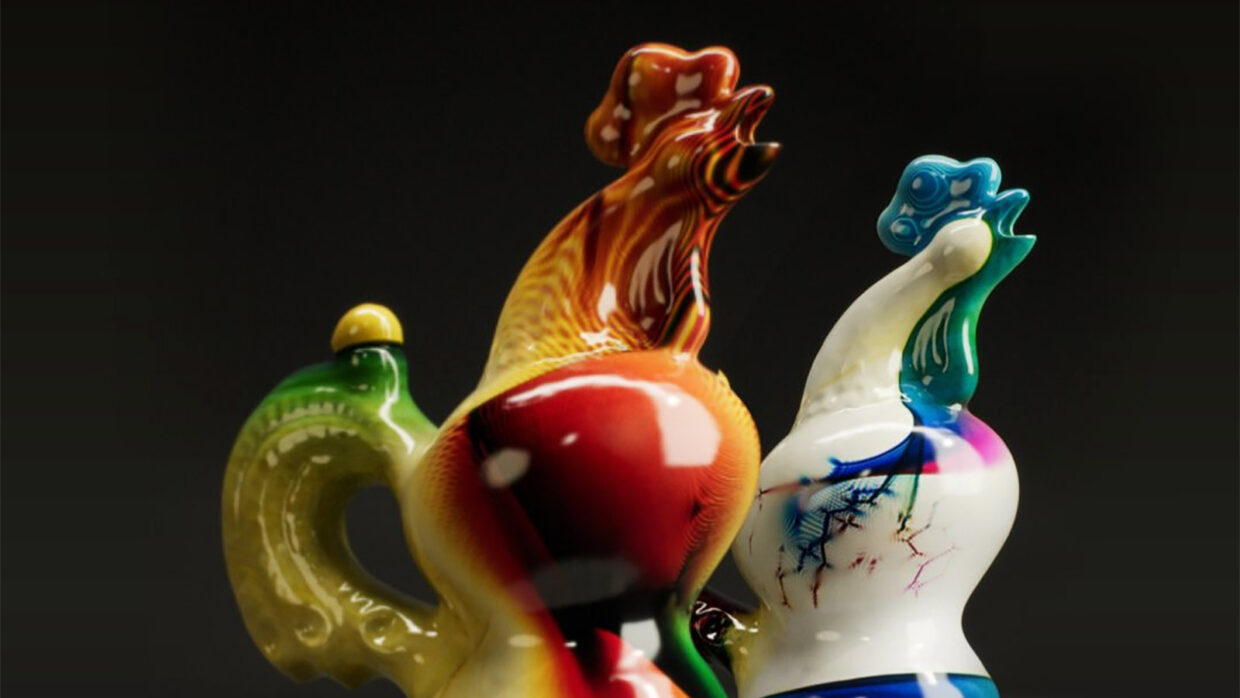Last week, Meta History, the project that’s been selling NFTs to raise crypto donations for Ukraine’s war effort, unveiled its latest collection, Incredible Rooster.
Incredible Rooster is a series of NFTs based on 3D models of a ceramic rooster that was found on top of a cabinet in a home in Bordianka, in the Kyiv region, after a Russian raid. As one of the few objects that survived the attack, the rooster has come to represent Ukraine’s resilience in the face of continued Russian occupation.
What happened

The Incredible Rooster collection will be gifted to museums, including the Centre Pompidou, the Whitney Museum of American Art, and the Van Gogh Museum. Image: Meta History
The NFT collection sees the “Borodianskiy Rooster” rendered in the style of noted artists, including Jean-Michel Basquiat, Hieronymus Bosch, Jackson Pollock, Gerhard Richter, Takashi Murakami, Yves Klein, and Andreas Gursky.
Each Rooster NFT will be donated to the museums that house the works of these artists. For example, the Picasso-style rooster is bound for the Guggenheim and the Basquiat one for the Museum of Modern Art. So far, the first museums to have accepted the gift of the NFTs include the Latvian National Museum of Art and the National Art Museum of Ukraine. NFTs have also made their way to other institutions including the Centre Pompidou, the Whitney Museum of American Art, and the Van Gogh Museum.
In donating these NFTs to various cultural institutions, Meta History hopes they will put the image of the NFTs on their websites to “attract the attention of art lovers” to support Ukraine’s military efforts.
Why it matters

The Latvian National Museum of Art has accepted and displayed the NFT on its homepage, as a symbol of “a common future and a dialogue of nations.” Image: lnmm.lv
Unlike Meta History’s other releases, which have collectively raised some $1.5 million, the Incredible Rooster digital art collection represents a gesture of solidarity, as much as an appeal, that the project is extending towards the world’s museums. By encouraging them to display the NFTs on their homepages, Meta History is hoping to draw attention back to the project and the ongoing Russian-Ukraine war, which, since May, has been losing online interest.
NFTs have certainly helped realize Meta History’s objectives, though, unfortunately, might not play well with more traditional institutions that have expressed skepticism toward these tokens. Venues such as the National Art Museum of Ukraine, which has minted its own NFT collection, and Guggenheim, which heads up a new media initiative, might be open to the project, but it waits to be seen if others will be as receptive to the gift.
Still, regardless of the medium, the point is for Meta History’s fellow museums to show their support for a country whose own cultural heritage remains under severe threat. As a representative of the Latvian National Museum of Art put it, “Accepting this gift, we, first of all, welcome the strengthening of ties with Ukraine as a part of the free world. By combining the cultural symbols of the two countries, we are talking about a common future and a dialogue of nations. NFT makes it possible on a completely new level.”
What they said
“Ukraine now seeks to speak with the whole world, overcoming language and mental barriers between nations. I call on leading museums of the world to accept the symbol of Ukrainian indestructibility into their collections. This would be a good gesture of solidarity and support.” — Tkachenko Oleksandr, Minister of Culture and Information Policy of Ukraine



